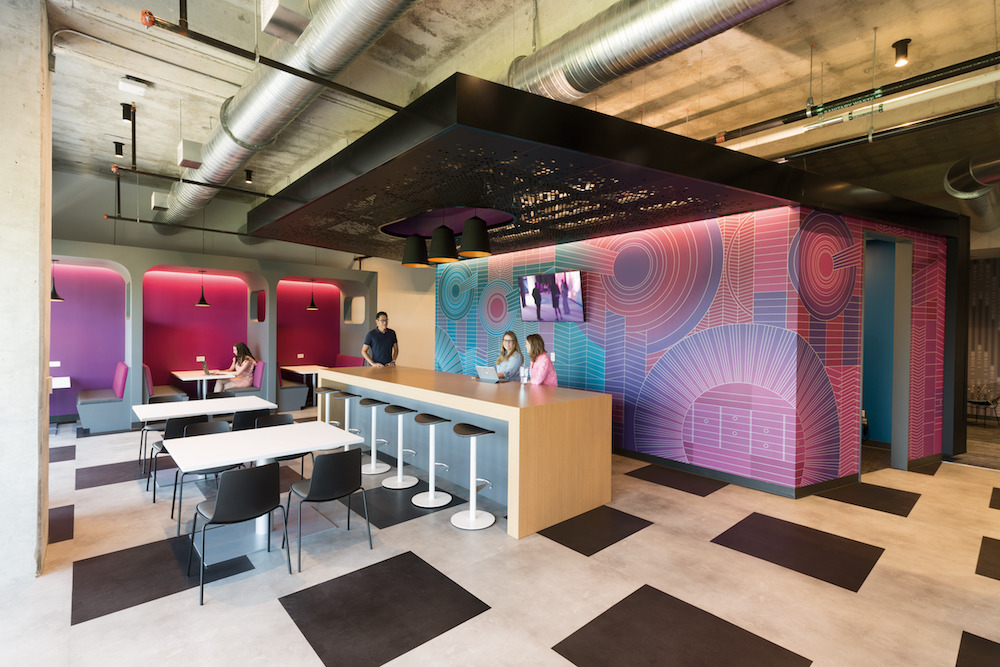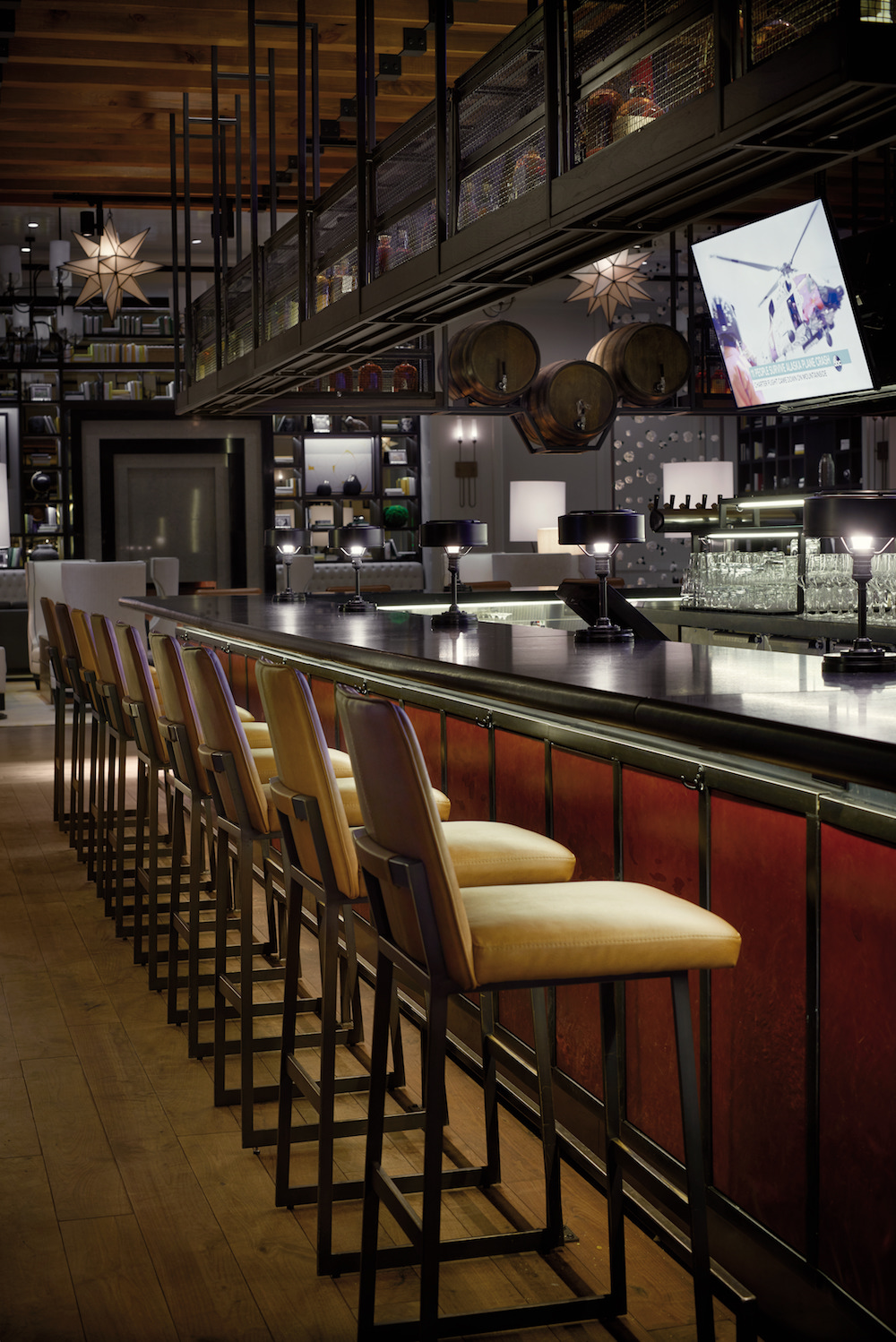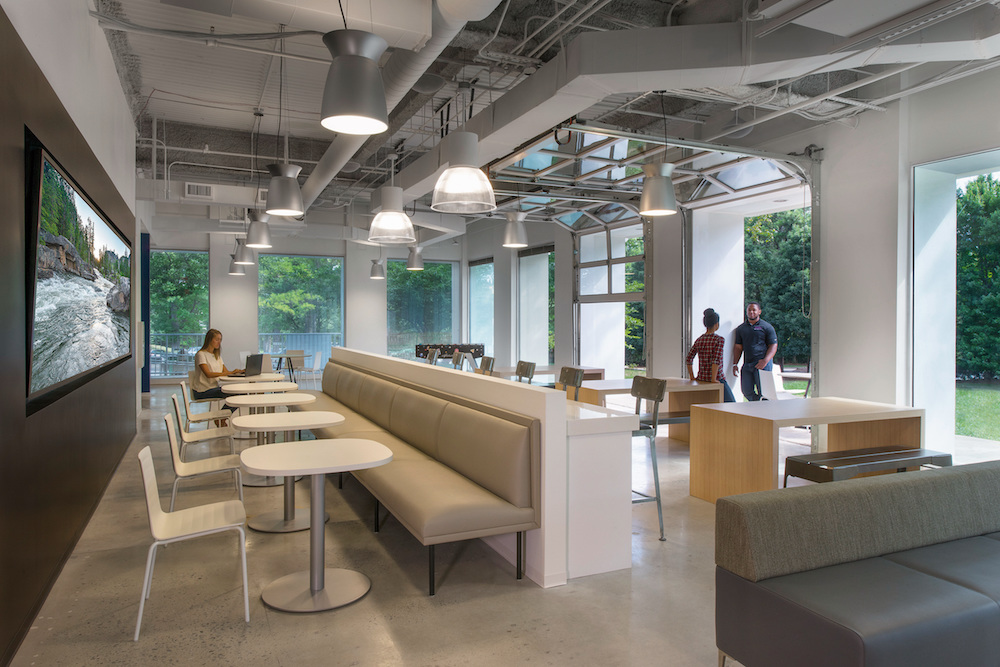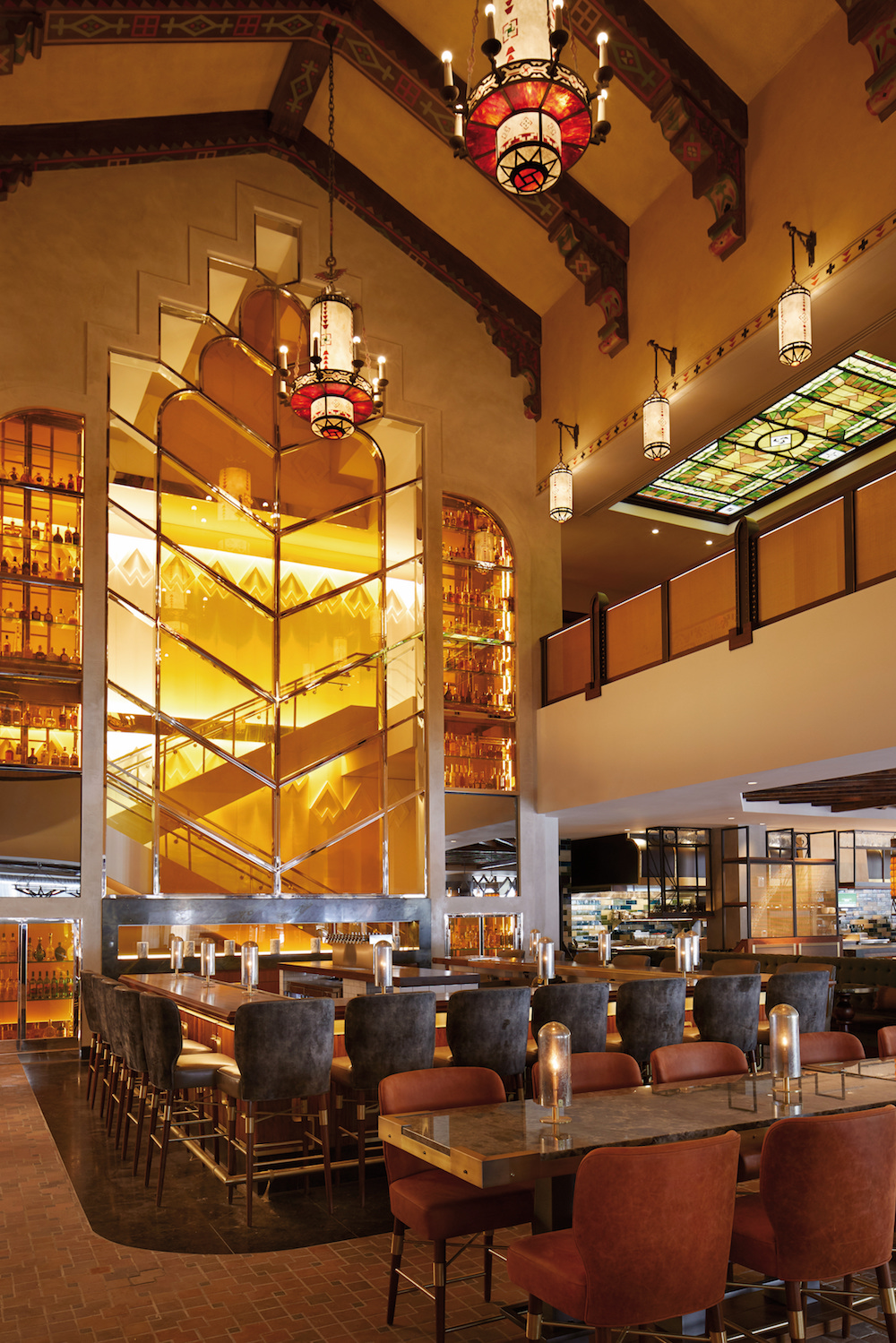Cooper Carry’s Brian Parker shares how the post-pandemic office can find inspiration in hospitality design to become a “destination with intention” that not only draws workers back, but also encourages them to stay together to get work done.

After more than a year of working remotely, how do companies get employees to return to working in the office in a post-COVID world?
That’s the million-dollar question employers are continuing to wrestle — and with the coronavirus vaccine rollout now fully underway, new ideas continue to emerge about how to entice people back.
Yes, entice. According to a recent survey by the Pew Research Center, more than half of employees said they would prefer to keep working from home even after the COVID crisis subsides, whether they are vaccinated or not. At the same time, company leaders need employees back in the office to boost morale and collaboration as much as to support management and mentorship. And while hybrid models may offer compromise and balance for some, the logistical challenges of scheduling meetings, allocating desks and implementing new policies could do more harm than good if not executed well.
Simply put, when health concerns subside, workplaces need to be intentionally designed in ways that make coming to the office more appealing than working from home. Enter the destination-worthy, hospitality-influenced office.
Consider this: the layouts and amenities of the best hotels and resorts are designed for optimal convenience, comfort and fun to keep people on property and capture more of guests’ dollars. Perhaps by leveraging the same strategies for the workplace, companies can capture a greater share of their employees’ ideas and creativity while also boosting company culture.
Here are five ways to intentionally create a destination-worthy, hospitality-influenced office workplace:
1) Forgoing excess formality
Post-pandemic workplaces will become more casual and comfortable — accelerating the trend of replacing traditional cubicles, formal lobbies and reception desks with spaces that better reflect the brand personality of the company and the type of work that happens there. Even prior to the pandemic, workplace designers and owners recognized that simply adding a pool table doesn’t suffice as a long-term draw.
Rather, these spaces should consistently foster inviting atmospheres and facilitate spontaneous conversation, similar to the recent transformation seen across the hotel sector. In recent years, hotel lobbies have become more entertaining and immersive places to watch or participate in the action. In many places, coffee and cocktail bars are replacing the transactional front desks of old.
For example, when entering The Hotel at Avalon in Alpharetta, Georgia, the first thing guests see is a cozy sitting area and a perennially packed lobby bar. The reception desk is hidden around a corner, drawing people into the experience before they even check in — and boosting the hotel’s revenue along the way.
Just as new builds and renovated hotels across the country have embraced this strategy of creating a modern living room feel, the same approach could be taken to reimagine the office arrival — making it a place employees want to be and be seen.

2) Prioritizing more “we” spaces and less “me” spaces
In the post-pandemic workplace, these living room spaces and bars not only redefine the water cooler experience, but they can also serve as alternative workspaces for employees to touch down with a laptop between meetings or take a quick phone call. That communal, unpredictable energy around them creates an experience they can’t get at home. It’s the same reason many people enjoy working from a local coffee shop or coworking space.
To make room for these common shared areas (also known as “we” spaces), companies may have to expand the office square footage or make do without assigned desks for every employee, every day. But in our new hybrid work reality, the latter isn’t necessarily a problem. Staying home or working remotely will likely remain an option for those needing solo time for heads-down work. It’s like the difference between the work a business traveler gets done in the hotel room versus the work they do when it’s time to collaborate and meet with others.
When employees do come into the office, they’ll seek those destination-worthy “we” spaces to gather together in person for truly creative and collaborative work that drives innovation, or transfers knowledge from veteran staff to new hires. Places to have a great town hall discussion, project “war rooms” and training spaces will be more important than making sure every employee has a dedicated desk at all times.
Instead, employees can reserve and check out a desk as needed. Another trend accelerated by the pandemic, this model — appropriately named “hoteling” — allows companies to maximize office space for what can only happen in the office.
3) Bringing the work outside
What’s a resort without great outdoor experiences like patios, relaxing paths, places to sit in the sun or shade to work or play? New workplaces will offer even more “flex appeal” if they blur the boundaries between interior and exterior.
Tactics like expansive windows, operational garage doors, rooftop patios and outdoor terraces further give employees a variety of options of where to work, take a break during their day or comfortably connect with a colleague in the fresh air.

4) Keeping things interesting with boutique, localized, novelty and rhythm changes
Quickly losing market share is efficiency-only office design that you could find in Anywhere, USA. Just as boutique hotels and destination resorts are reflective of the cultural fabric of the places in which they are located, the vibe of the destination-worthy, hospitality-influenced workplace should embody the unique nuances of a company’s culture, the surrounding city context as well as the employees who work there.
By curating more holistic environments that bring together space planning, architecture, lighting, acoustics, materials, texture and even objects, the design of the workplace can feel like a favorite restaurant or hotel that you want to return to again and again.
Of course, one key difference between hospitality and workplace design is that people aren’t going to the same restaurant or hotel as frequently as the office. To keep the experience of the office feeling fresh from day to day, one tactic could be creating various in-office “neighborhoods” for employees to visit and move around.
For example, at the three-building Park Center development in Atlanta that serves as a regional campus for a large insurance company, each building is defined by a distinct character, vibrant colors and custom carpeting.
The interiors of Park Center One celebrate Atlanta’s tree canopy and the variety of urban parks one could experience throughout the city, while Park Center Two celebrates Atlanta’s arts scene, outdoor recreation and history as a railroad hub, and Park Center Three symbolizes the rural, mountainous and coastal geographical regions in Georgia. These abstract motifs manifest in unique color palettes, finishes and furniture throughout two, 1,600-square-foot communal spaces centrally located on each office floor, directly upon exiting the elevators. Inspired by the idea of public parks, these shared spaces all maintain an equal standard of sophistication while appealing to different personalities and needs, offering a variety of choices for employees.
Another tactic could be providing more options for employees to grab a coffee, get a snack or pick-up lunch. Vending machines or the communal workplace fridge won’t cut it anymore when the goal is to attract employees to the office. Rather than the standard cafe with a static menu, perhaps the future of the workplace incorporates mobile food trolleys — think the in-office version of a food truck — or onsite food halls with rotating options.

5) Relaxation within reach
Work can be stressful, but the office space doesn’t need to be. After all, the destination-worthy, hospitality-influenced workplace should have areas to, well, relax. Mapping the different energy levels of an office environment can make sure that the workplace isn’t only seen as a tense or rigid place.
As human beings, and inhabitants of these workspaces, employees move from place to place throughout the day experiencing a wide range of different emotional responses. Consider early morning, after just arriving at the office, filling a coffee mug with a favorite brew in the community hub and taking a moment to look out of the window. It is quiet and calm, and the energy of the day has not yet ramped up.
Compare that to a big mid-day meeting in the large central conference room. Twenty people at the table and 15 more on the big screen who have joined the conversation virtually. The energy is high, ideas are flowing and the dialog in the room is moving the objective forward with a high degree of thoughtfulness and innovation.
Later that day, a staff member may be in need of some mentorship and an introspective conversation. A supervisor joins them in a small private huddle room, with soft lighting and a warm welcoming color on the walls. The tone of the conversation is serious, but these colleagues are free to be vulnerable in the privacy of this kind of space.
As the day draws to a close, a group of colleagues gather on soft lounge seating in an open gathering space at the center of the office. As the sun sets, light shines in through windows and coworkers talk, laugh and begin to unwind before heading home after a successful day at the office.
As designers of workspaces, taking the time to consider and map out the various kinds of energy levels which are present throughout one’s day and providing a variety of spaces to facilitate them is essential.
Just as favorite restaurants or resorts curate emotional responses, experiences and memories, so too can workspaces. Changes in volume, color, texture, lighting and even enclosure can all influence the kind of energy and dynamics of a workplace environment. Anticipating and mapping these to provide a palette of options for the inhabitants of today’s office space can make sure that when stress levels get high, a place to destress and find some relaxation is always within reach — without needing to leave the office or go on a vacation to find it.
With the right hospitality-inspired design strategy in place, the workplace won’t just rebound — it will be a more sought-after workplace than before and a much-welcomed reprieve from remote work.

